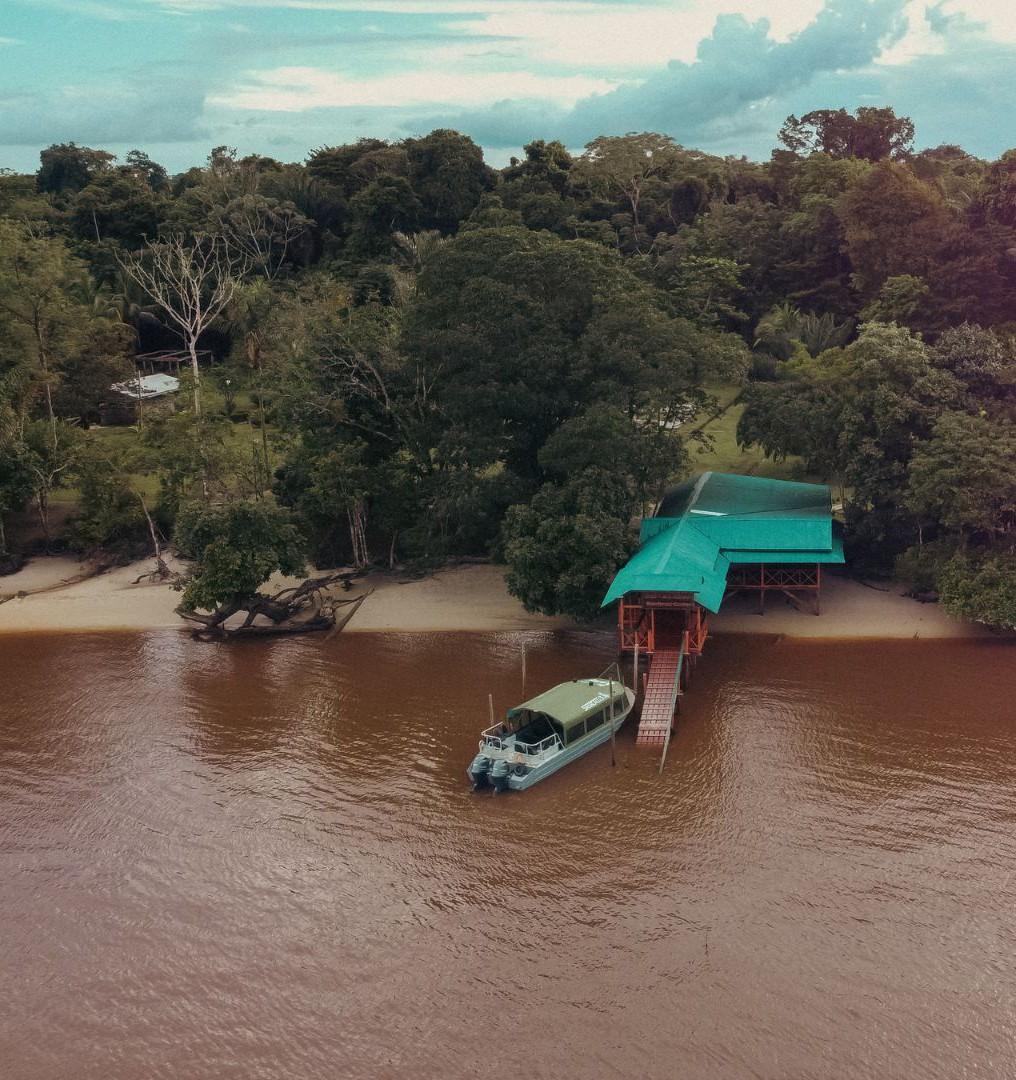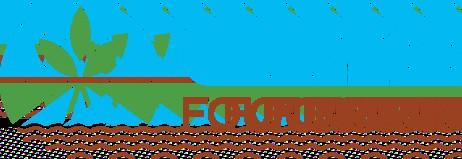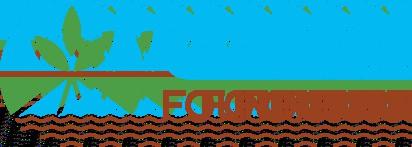

RAINFOREST CENTRE
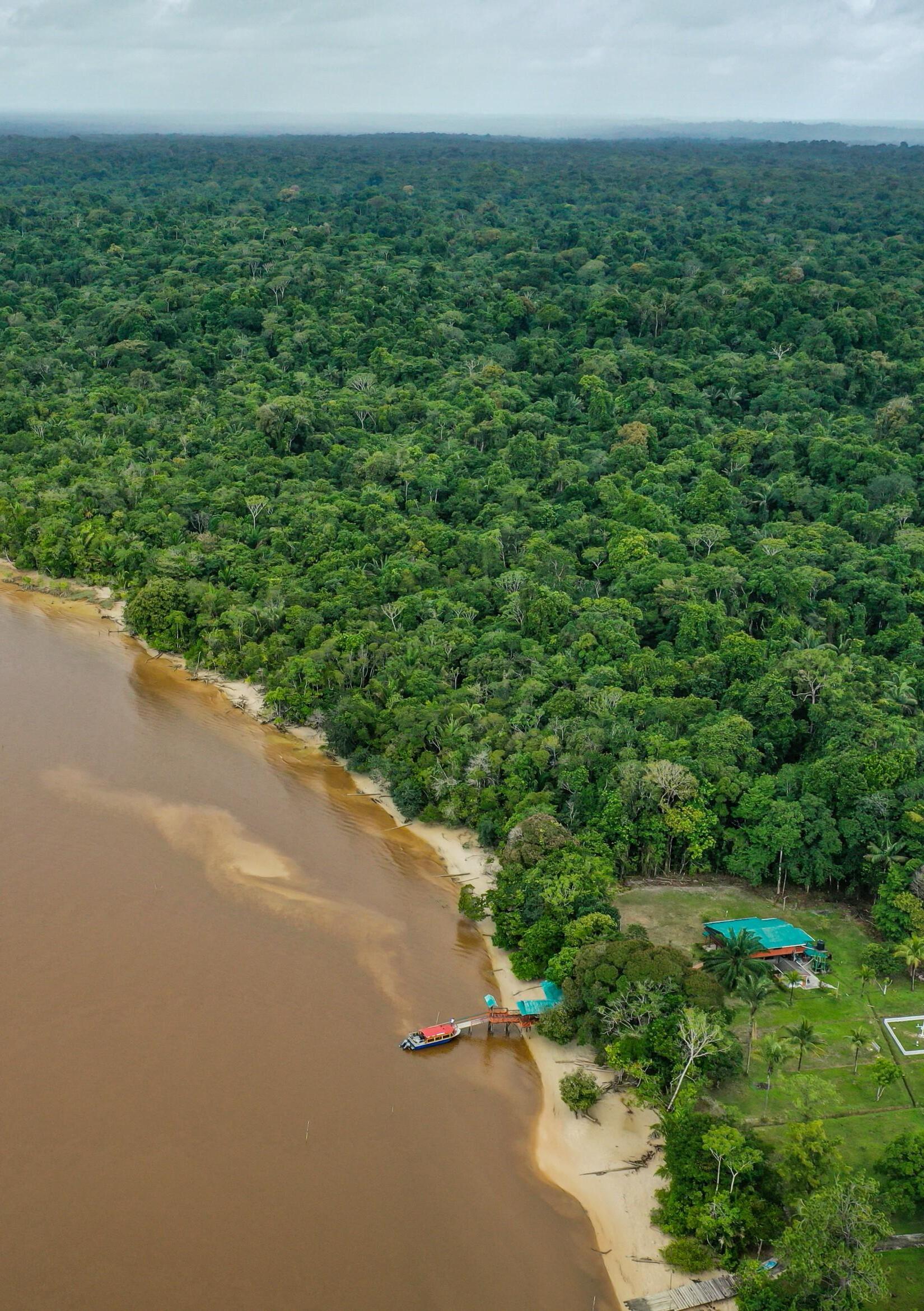
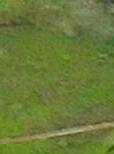
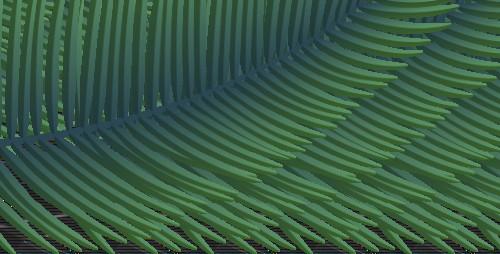

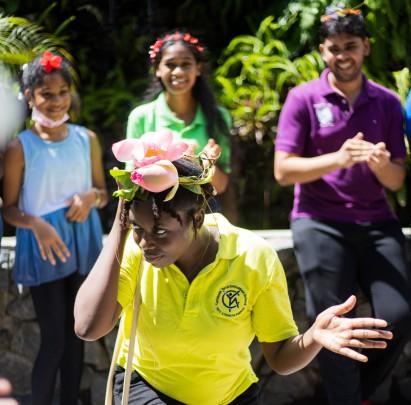


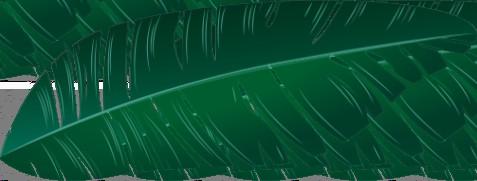
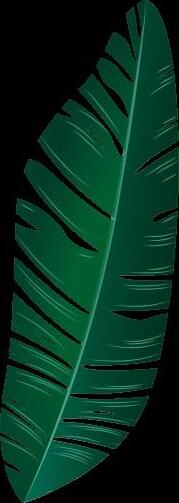
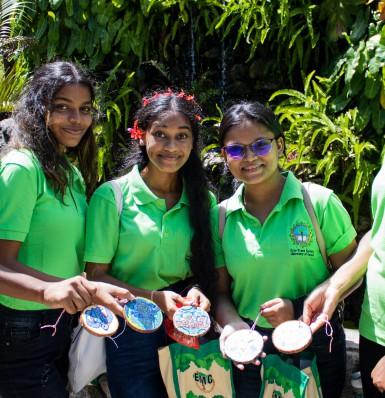
The EMC Foundation was established in 2022 by Mr. Shyam Nokta to support environmental awareness and education in Guyana, with focus on youths. The drive for this initiative was influenced by the evolution of environmental issues over the last three decades and their importance in today’s national and global context.
OURMISSION
Motivating action through greater environmental awareness and education in Guyana.
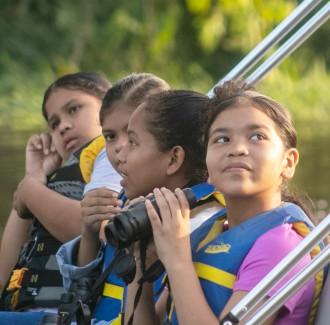
Experience
Promote and facilitate activities to encourage a better understanding about the environment

Connect
Create a network to connect people on environmental issues.
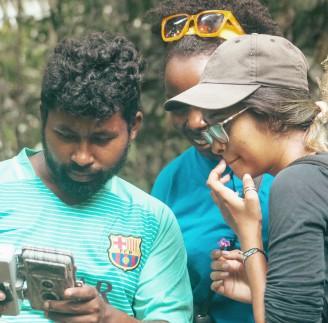

Provide opportunities to experience Guyana’s natural environment
Saxacalli Village
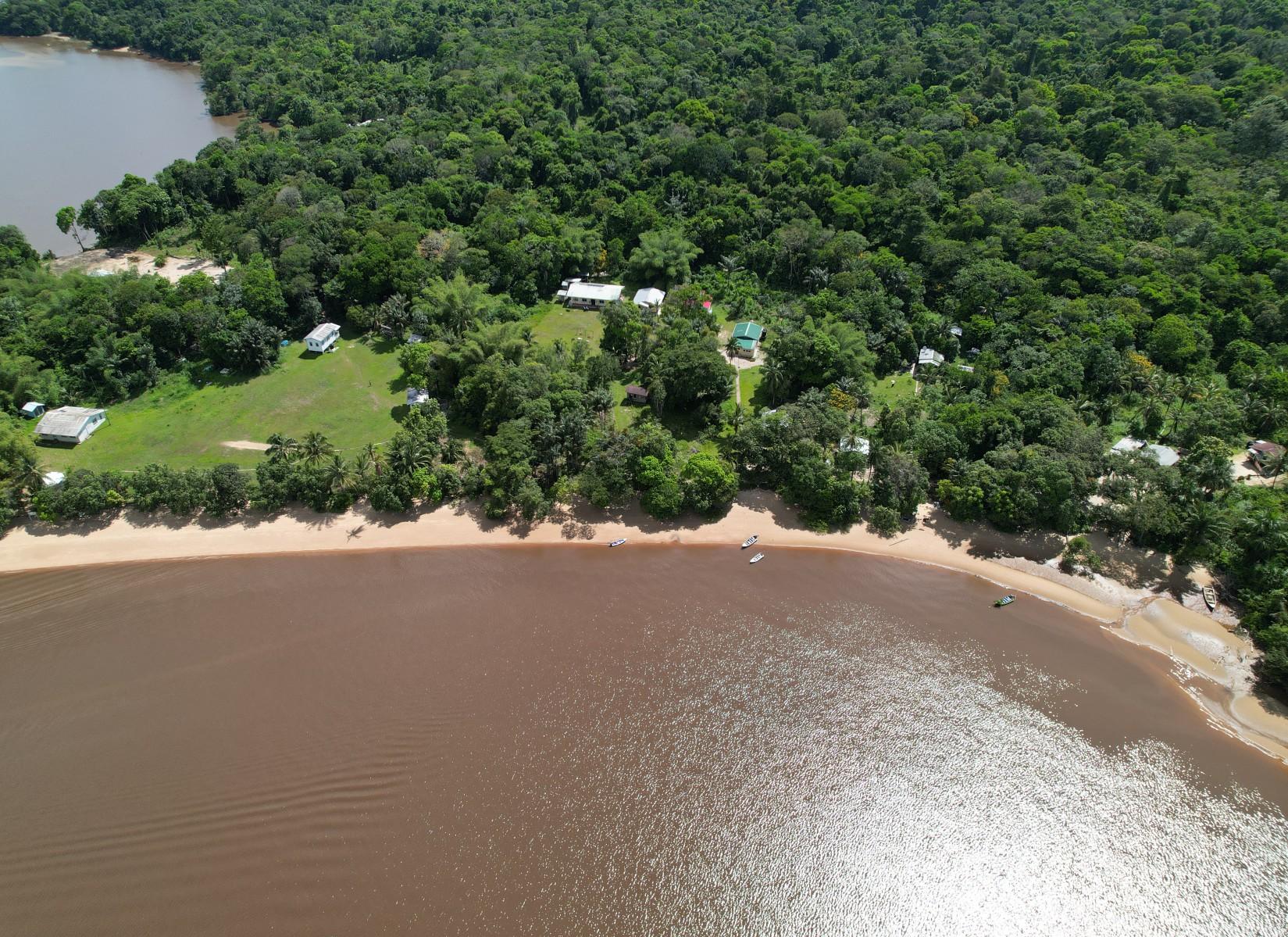
Escape from the Mundane
“Saxacalli” translated from the Arawak language, means kingfisher. The area was named Saxacalli by the Awarak people because of the abundance of kingfisher birds found there. While it is still unclear how long the village has been in exitance, anthropologists believe it has been present since the first Dutch settlements along the Essequibo River around the 16th century


Mainly comprised of Arawaks at the time, the community was a likely trading partner with the Europeans who had set up trading posts at Fort Island and Kyk Over-Al. Presently, Saxacalli is a predominantly mixed community with Arawak, Coastlander (migrants from Guyana's coast), and Carib residents.
Top: Aerial View of Saxacalli Village and Benab by the Beach. Bottom: View of Fort Island.

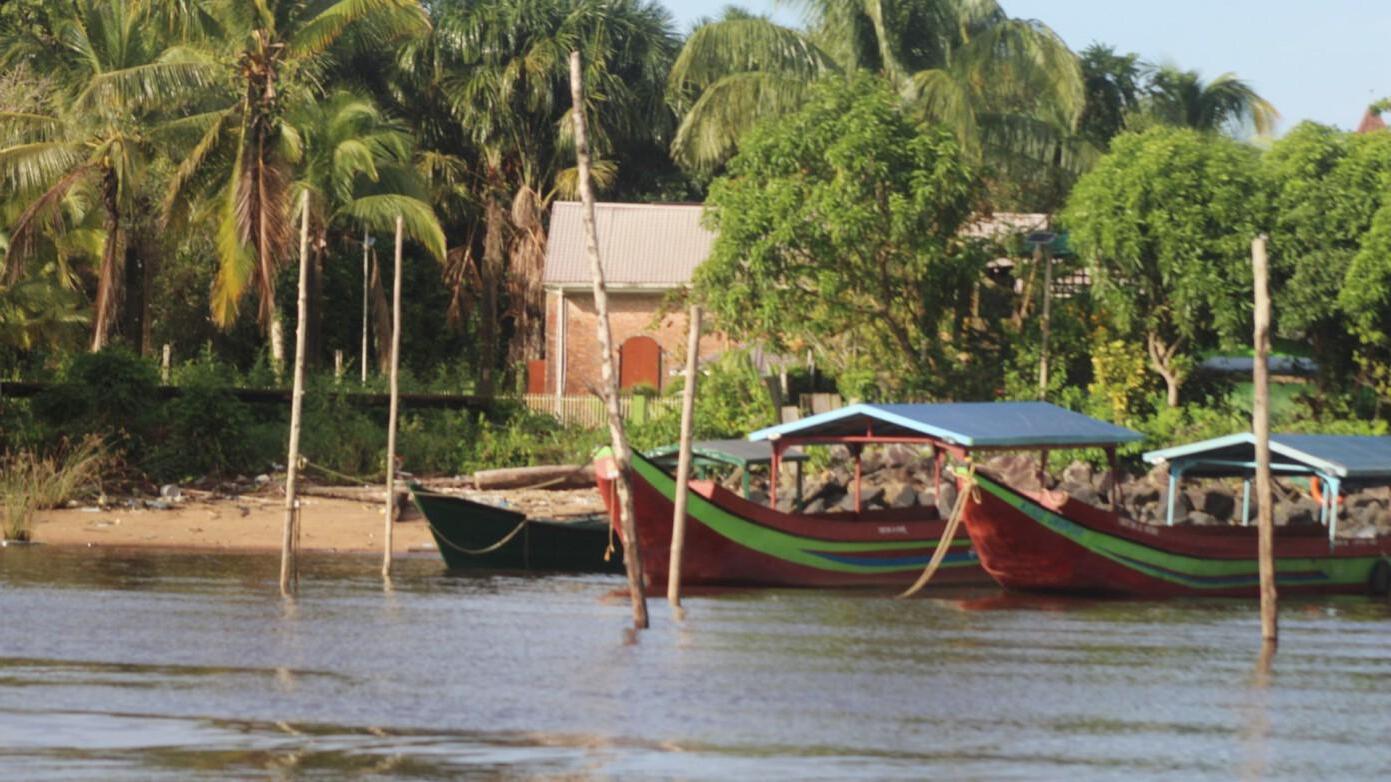
Saxacalli Rainforest Centre
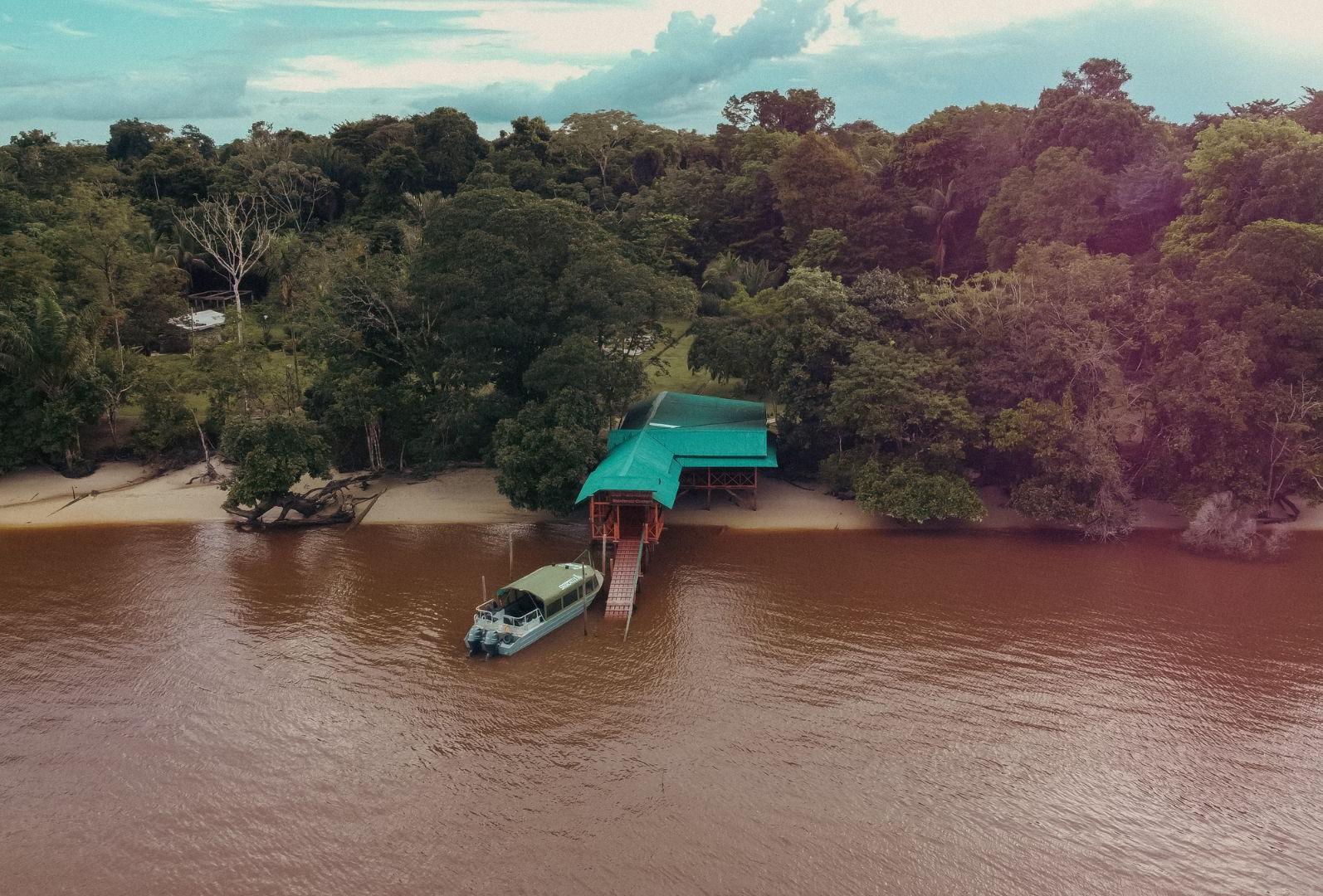
The Saxacalli Rainforest Centre (SRC) is a private rainforest reserve dedicated to biodiversity research, education, and awareness.
As an Environmental Science student at the University of Guyana, Environmental Management Consultants Inc (EMC) Managing Director Shyam Nokta recognized that students were unable to afford the high costs of visiting natural sites, such as Shell Beach and Kaieteur Falls.
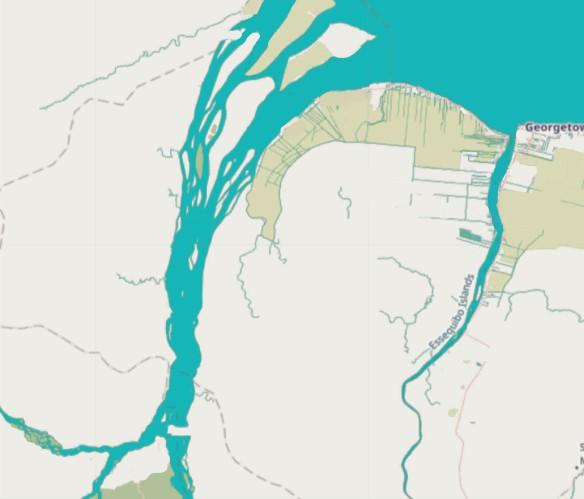
As a result, they were denied opportunities to experience and conduct research in Guyana's diverse ecosystems. To bridge this gap, Mr. Nokta sought to find an area close to Georgetown with natural forests which could accommodate student research, rainforest education and awareness, and recreation.

Rainforest Reserve dedicated to Biodiversity Rese
Top: Aerial View of SRC. Bottom: SRC Deck and Main Lodge.
Bartica
Parika
Saxacalli CentreRainforest
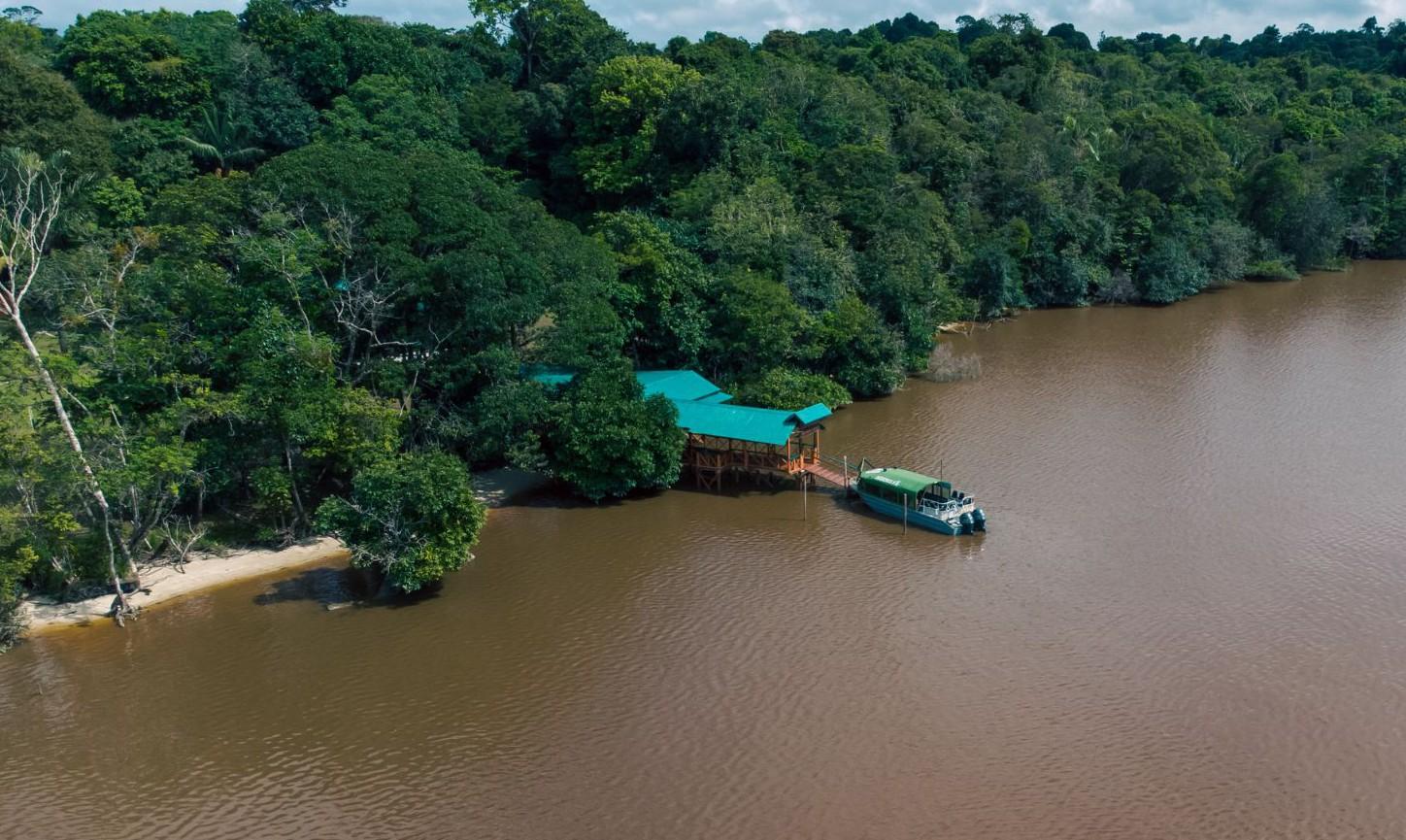
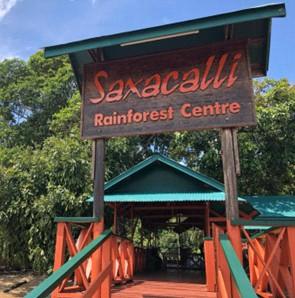


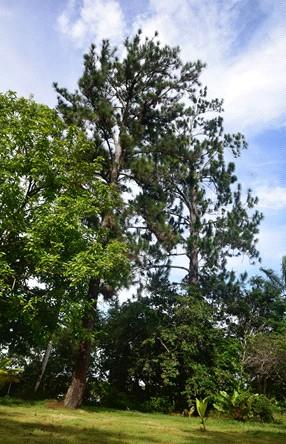
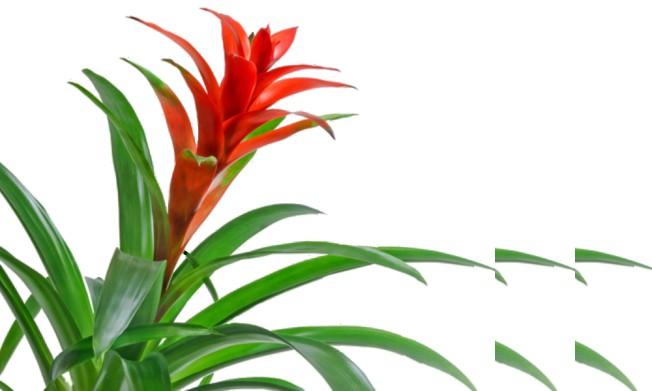
The unique cultural and ecological diversity of the Saxacalli area convinced Mr Nokta to secure a lease for approximately 75 acres of rainforest, adjacent to the Essequibo River From humble beginnings, today, the Saxacalli Rainforest Centre is one of Guyana's first private nature reserves.
A large pine tree, over 60 feet tall, planted by an early European who was present in the area in the 1960s serves as the Centre's landmark

The Saxacalli Rainforest Centre offers a unique opportunity for students, researchers, and persons with an interest in nature to study the environment, explore the tropical rainforest, and enjoy the sun, sand, and waters of the Essequibo.
Top: Aerial View of SRC. From left: Entrance to SRC, 60 Foot Pine Tree, and Camera Trap Orientation with Students. Bottom: Bromeliad Flower found at Saxacalli.
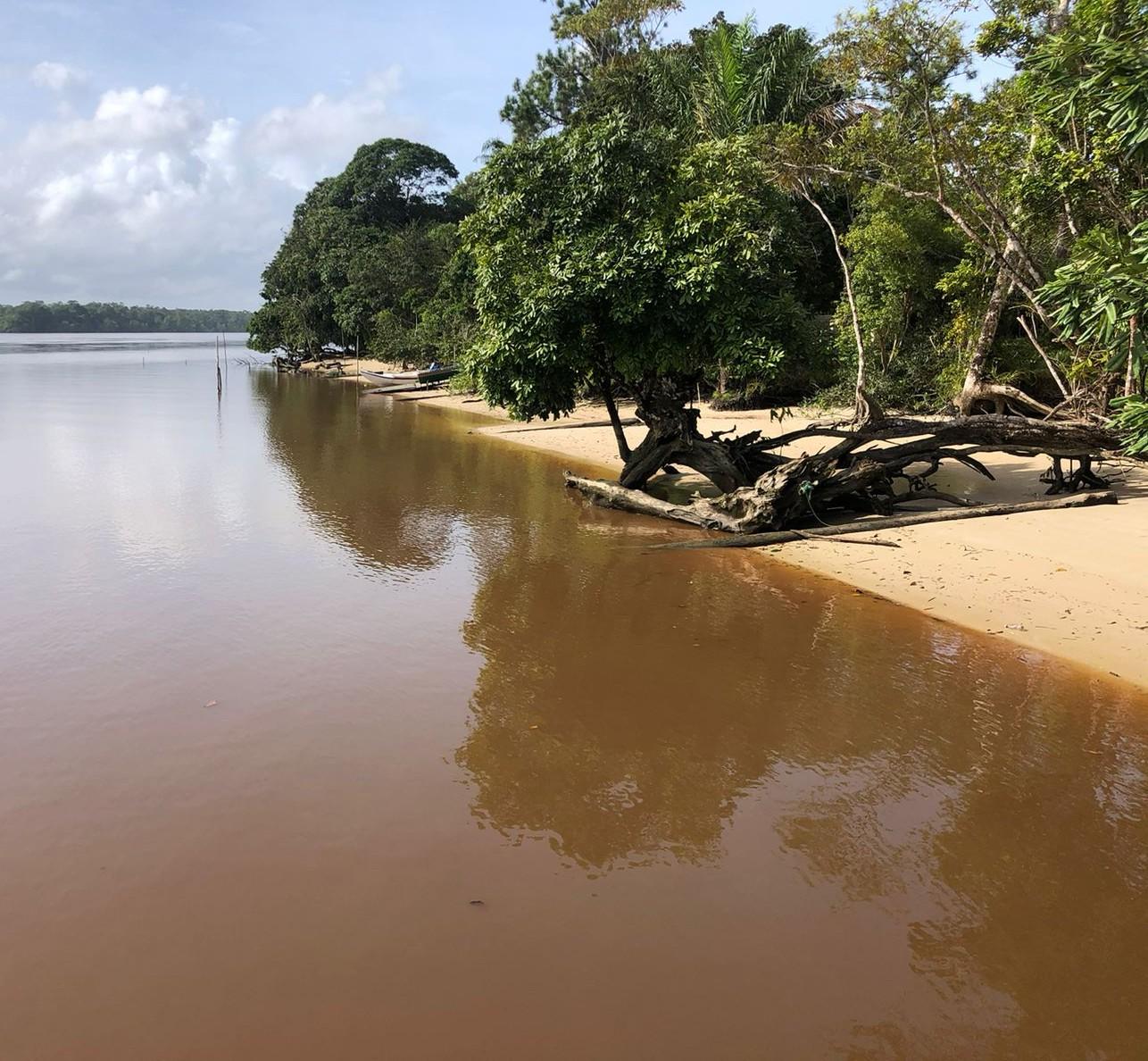
More than just a Stay
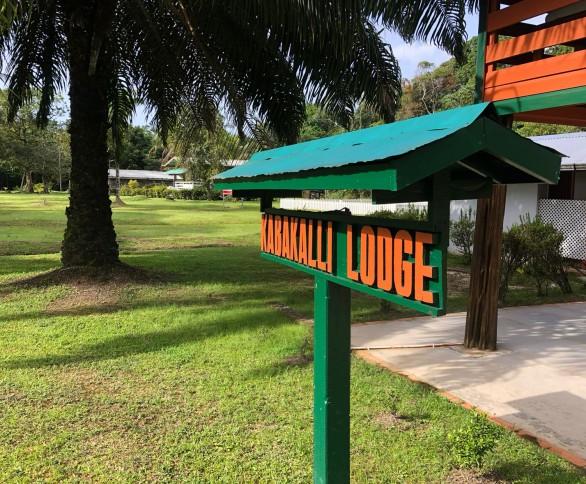
Experience a Serene Environment
The Saxacalli Rainforest Centre offers an immersive experience with a variety of hands-on activities.
The extensive beach stretches to approximately 100 meters and provides more than enough space for swimming, boat rides, and sports such as cricket, volleyball, and football.
The best option of course, is simply relaxing in a hammock under the shade of overhanging vegetation and enjoying the beautiful view of the mighty Essequibo River
The Centre has unique hiking trails through the rainforest, where adventurous guests can explore the pristine nature reserve.
One can also go on canoe rides to nearby creeks, fish, bird watch, and enjoy the traditional wabanee experience with local guides.
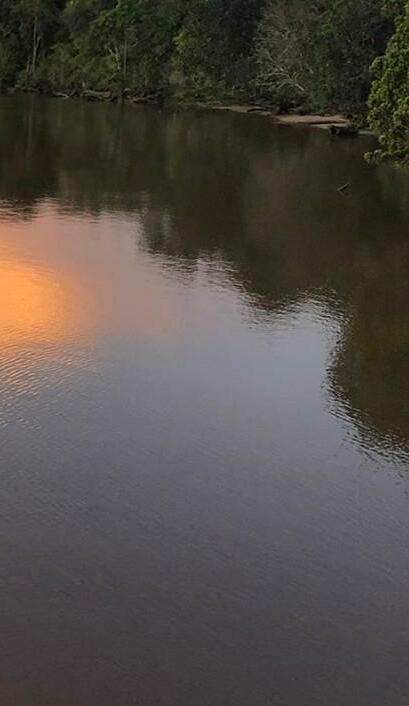
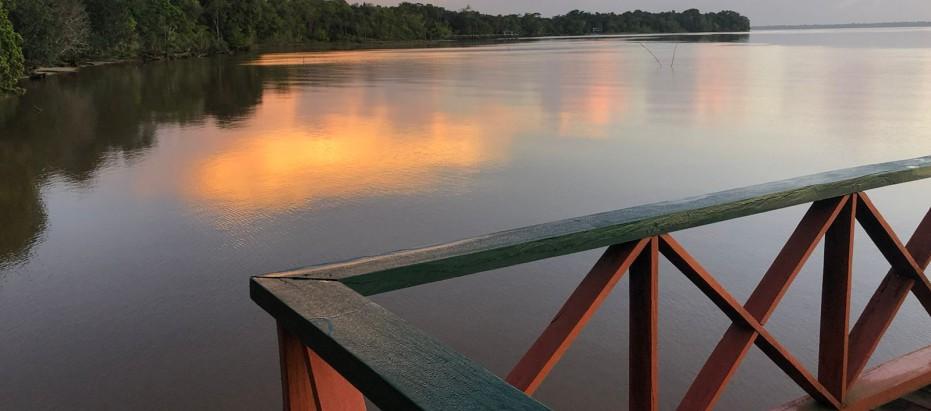
Top: SRC Beach Front and Entrance to the SRC Lodge. Bottom: Sunset from the SRC Deck.

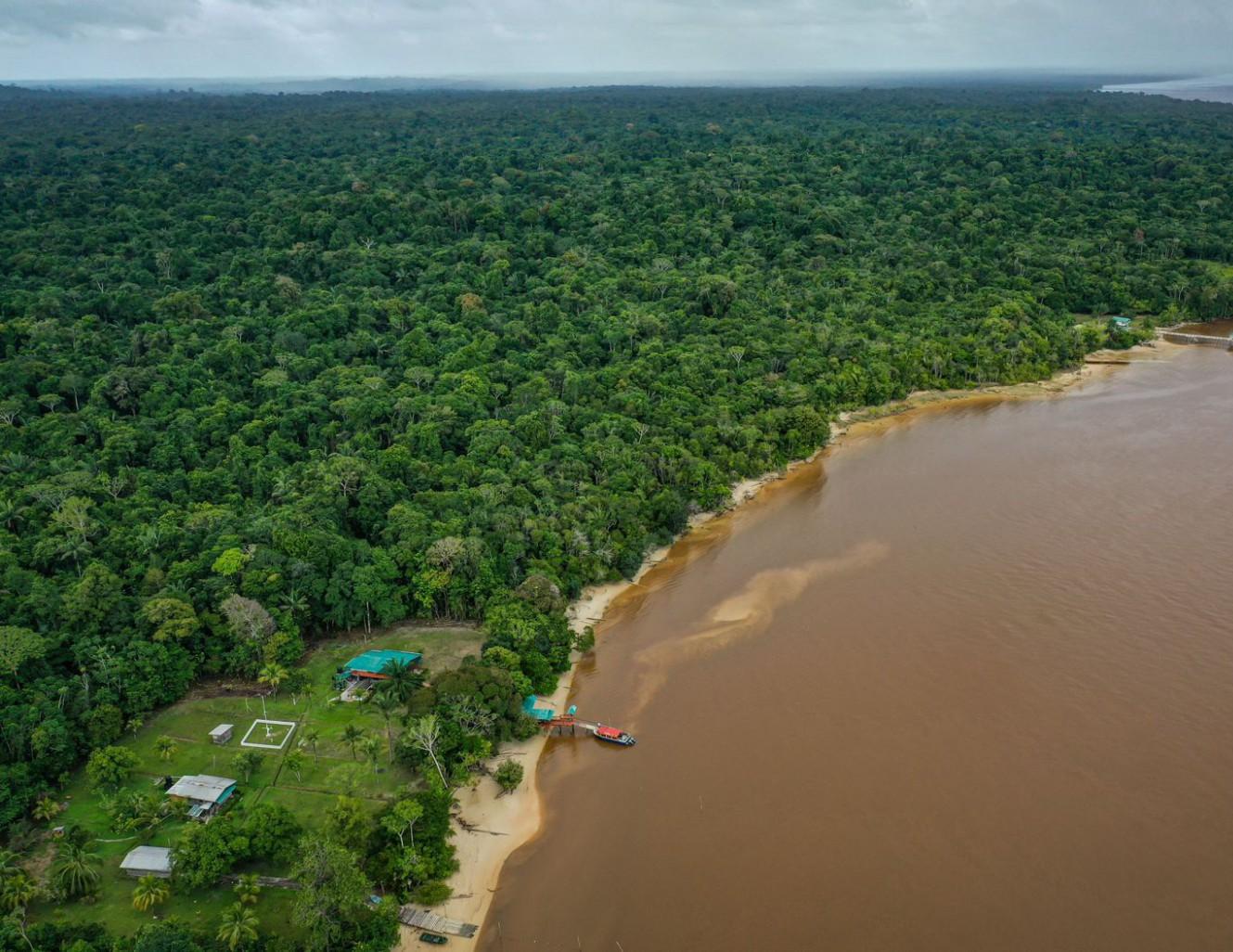
More than Just a Stay More than Just a Sta
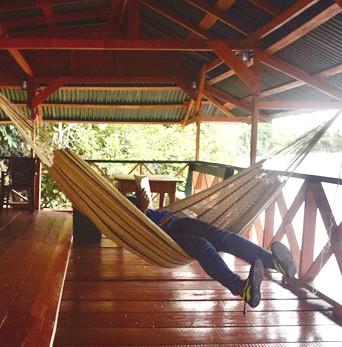
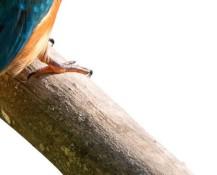

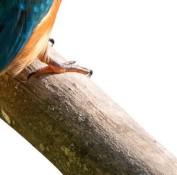
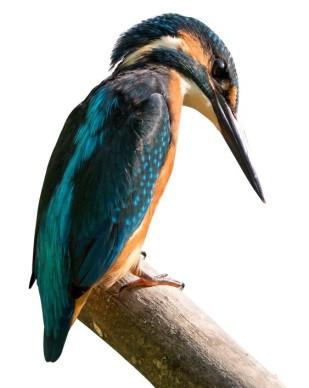
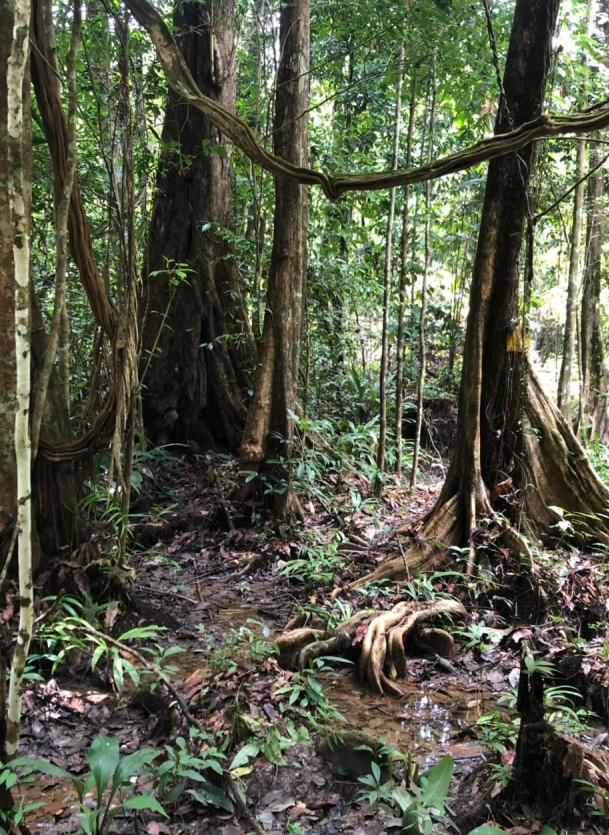
Top: Aerial View of Saxacalli Rainforest and Essequibo River. From Left: Guest Relaxing in Hammock, Mora Trees in the Reserve, Hiking in the SRC Trails, and SRC Manager Holding Monkey Pot.
Visitors can also go to the Saxacalli village or Saxacalli Mission as it is referred to, an Arawak community on the left bank of the Essequibo There one can interact with community members and purchase local handicrafts.
The Saxacalli experience is a welcome break from the hustle and bustle of city life and guarantees a well-deserved stay with opportunistic wildlife sightings.
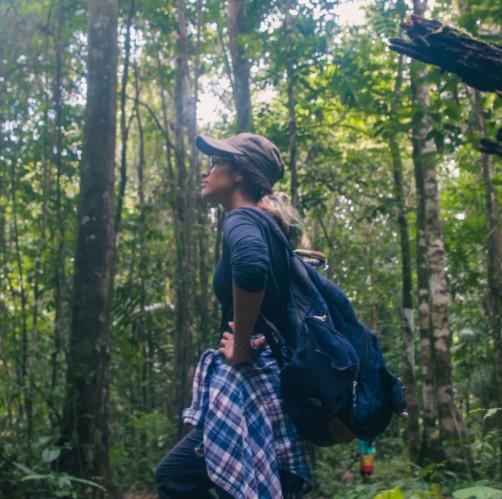

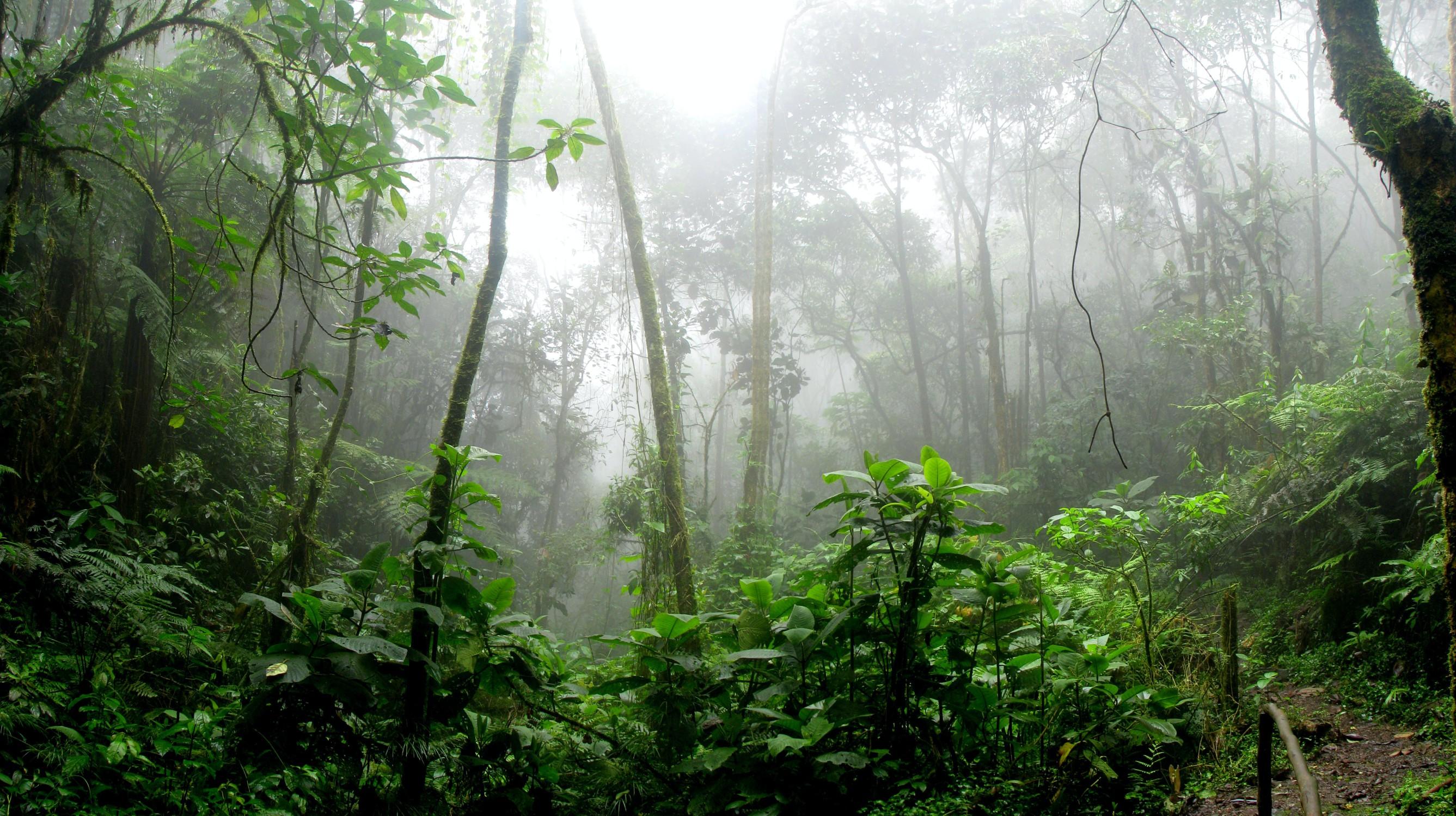
Rich in Biodiversity
Floral Diversity in Saxacalli
The forest is Mora or swamp forest, characterized by a mixture of clay, loam, and brown sand soils that support an interesting variety of flora, including commercial timber species such as greenheart, kabacalli, crabwood, and mora.
The ecosystem also includes a unique mix of epiphytes or air plants such as orchids, which grow on the surface of other plants for physical support but derive moisture and nutrients from the air, rain, water, or debris accumulating around it. Other non-timber forest products include cufa, mucru, and palms such as the ite, courru, and kokerite.
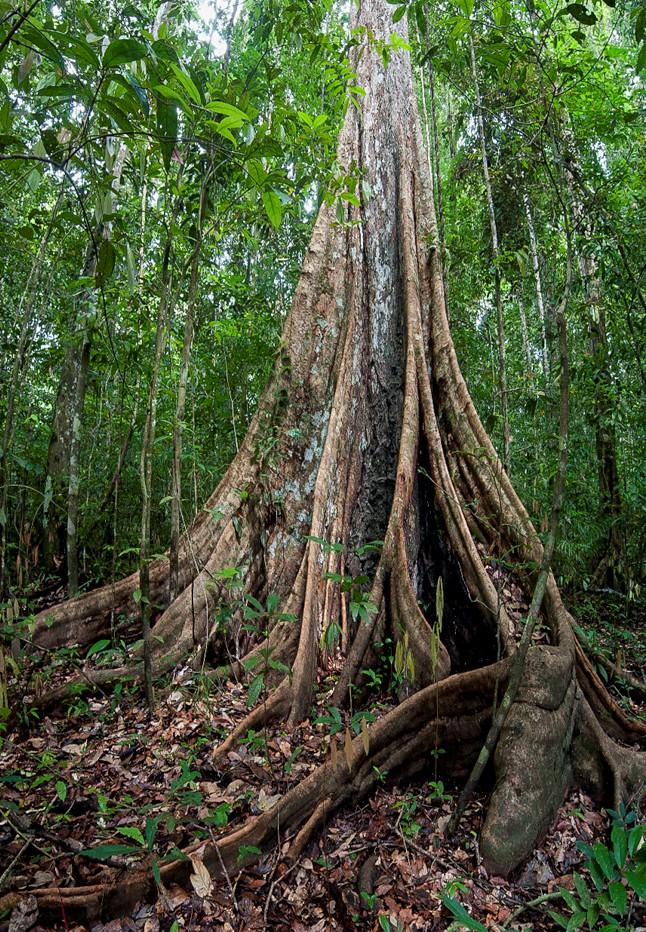
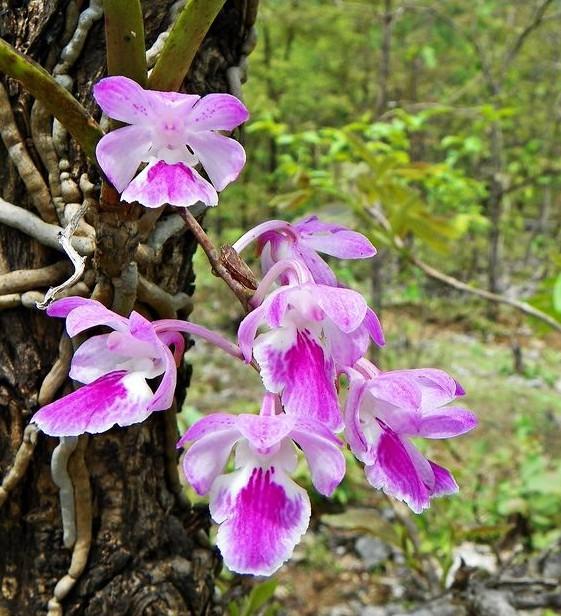
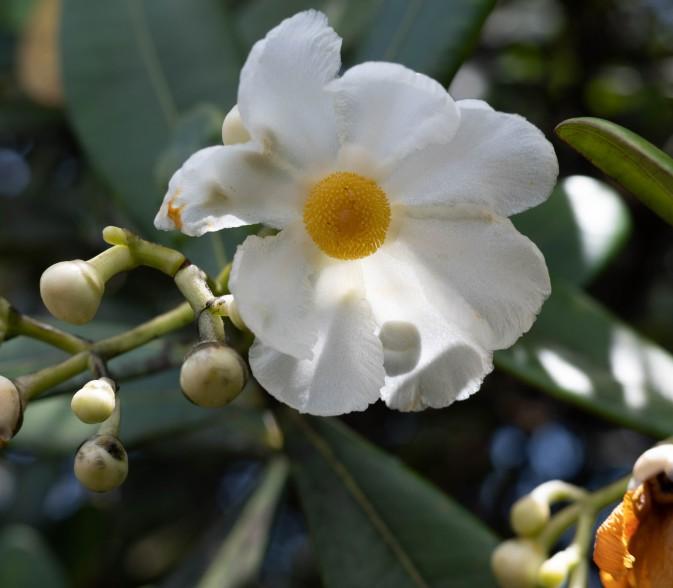
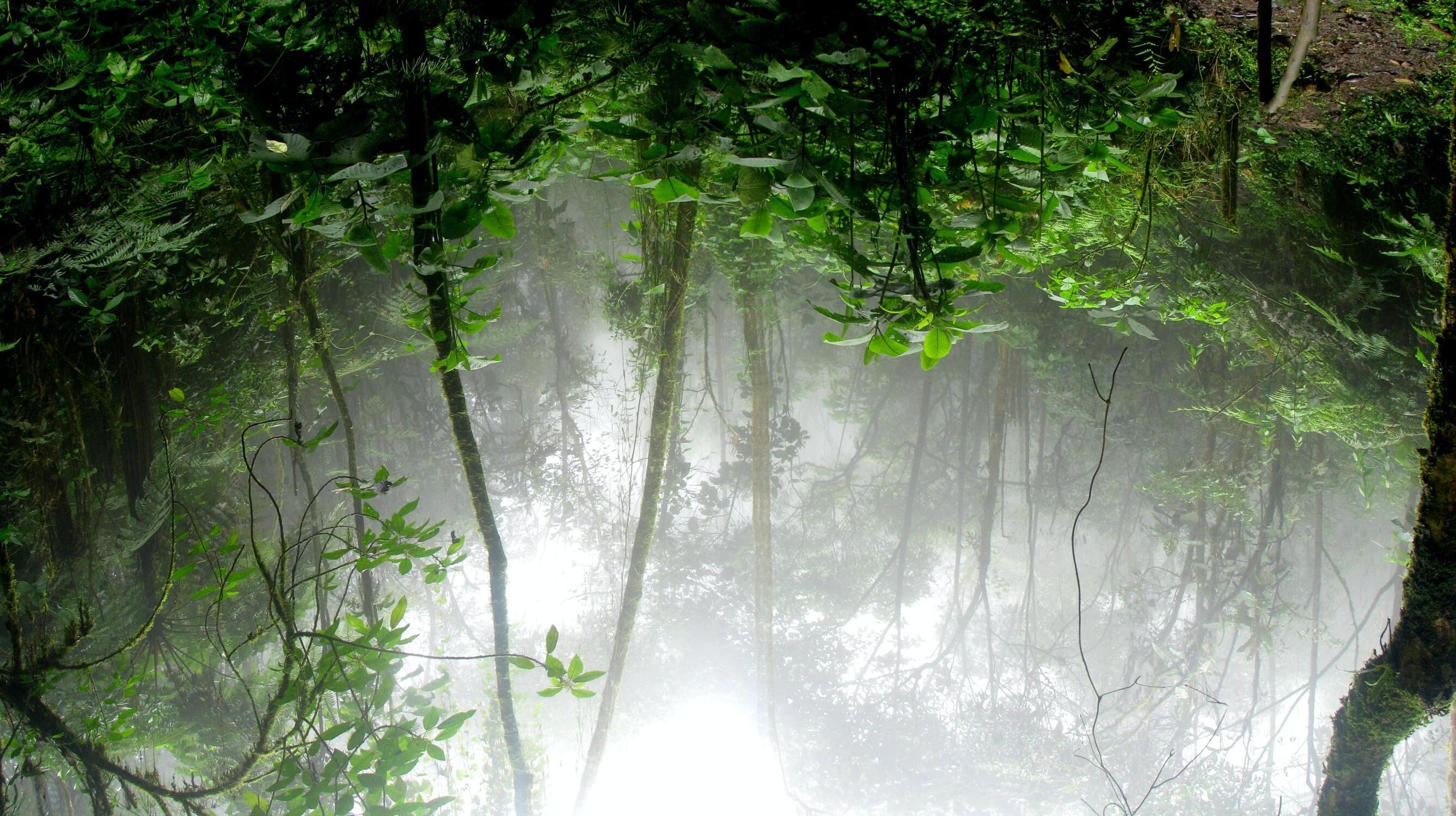
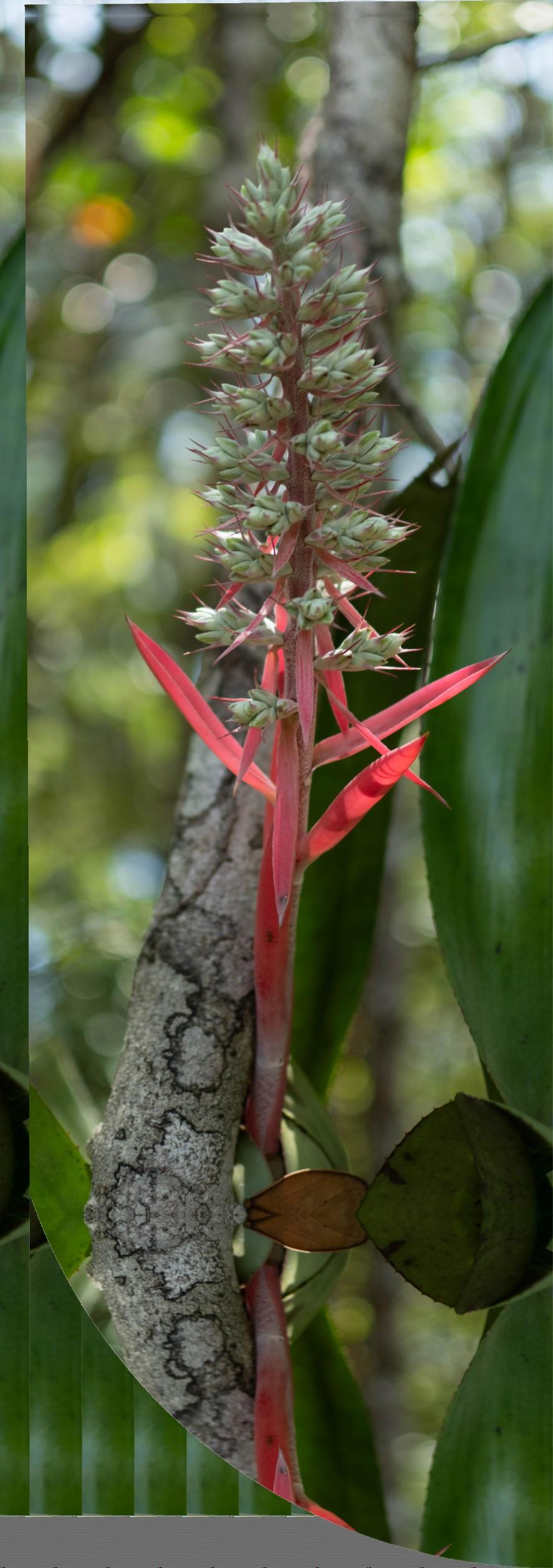
Top Right: Bromeliad Plant. From Bottom Left: Towering Mora Tree, Vanda Ochid and Cufa Flower.
Faunal Diversity in Saxacalli
The faunal diversity of Saxacalli includes the agouti, deer, tapir, wild hog, armadillo, yellow-footed turtles, jaguars, ocelots, sloths, squirrel monkeys, capuchin, and howler monkeys. The area is also home to several fish species such as basha, dogfish, tigerfish, lungfish, and haimara, among others.
The bird diversity at Saxacalli is one of its most unique features. It includes vultures, hawks, falcons, currasows, hummingbirds, kingfishers, jacamars, woodpeckers, toucans, macaws, and parrots.
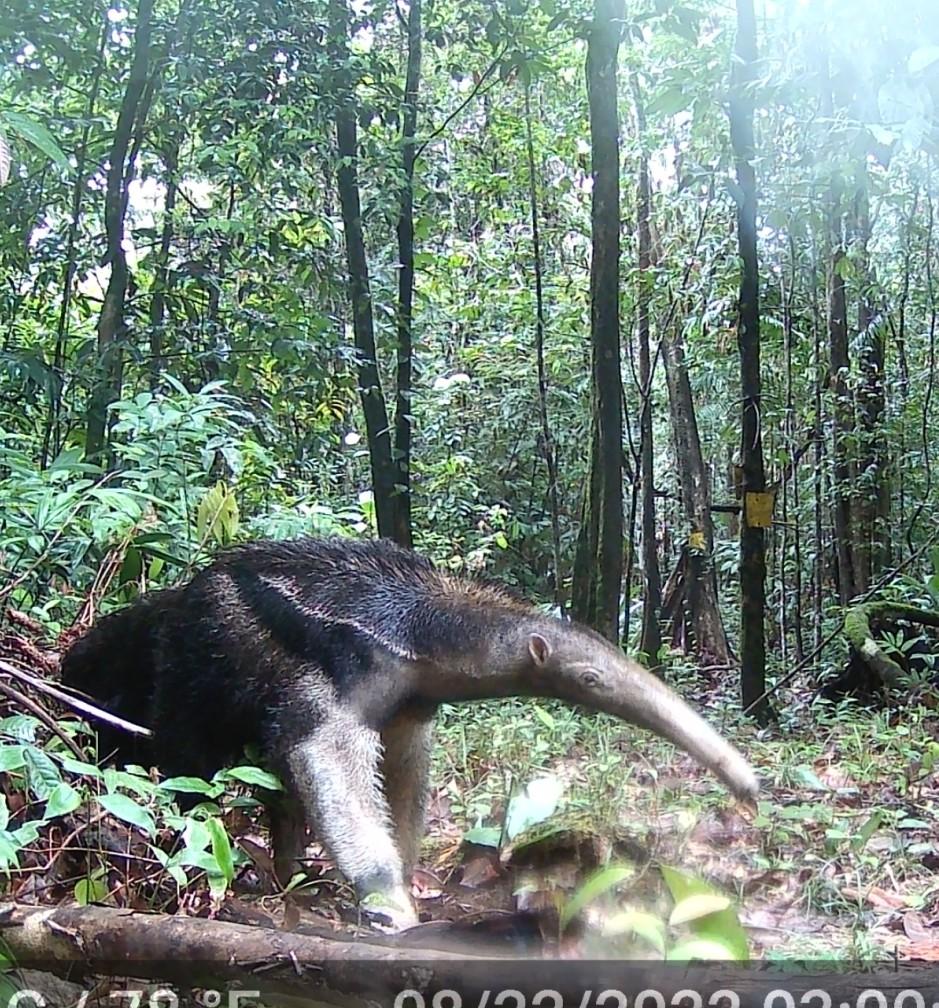

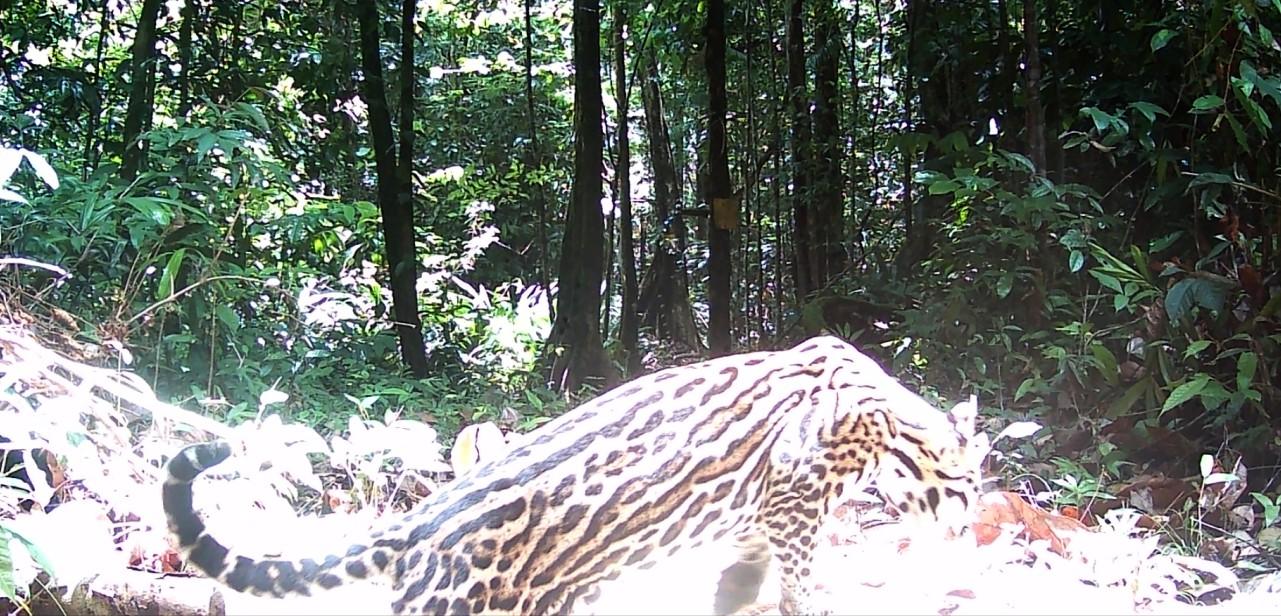
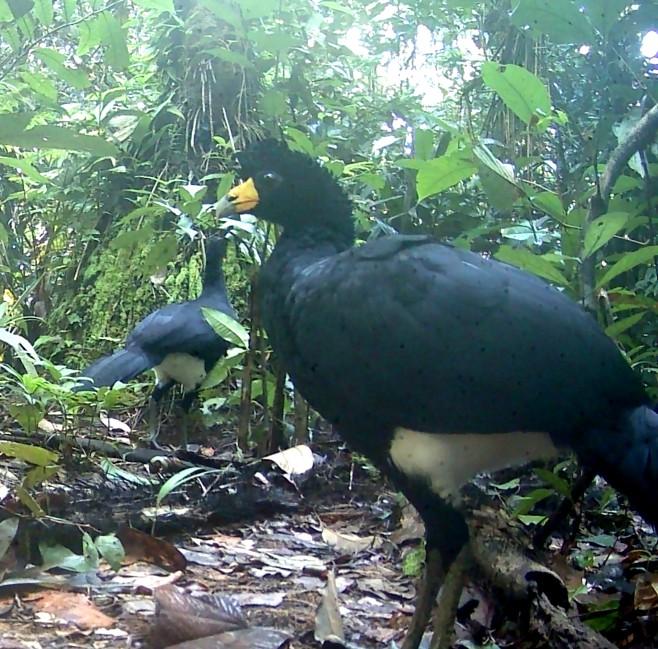
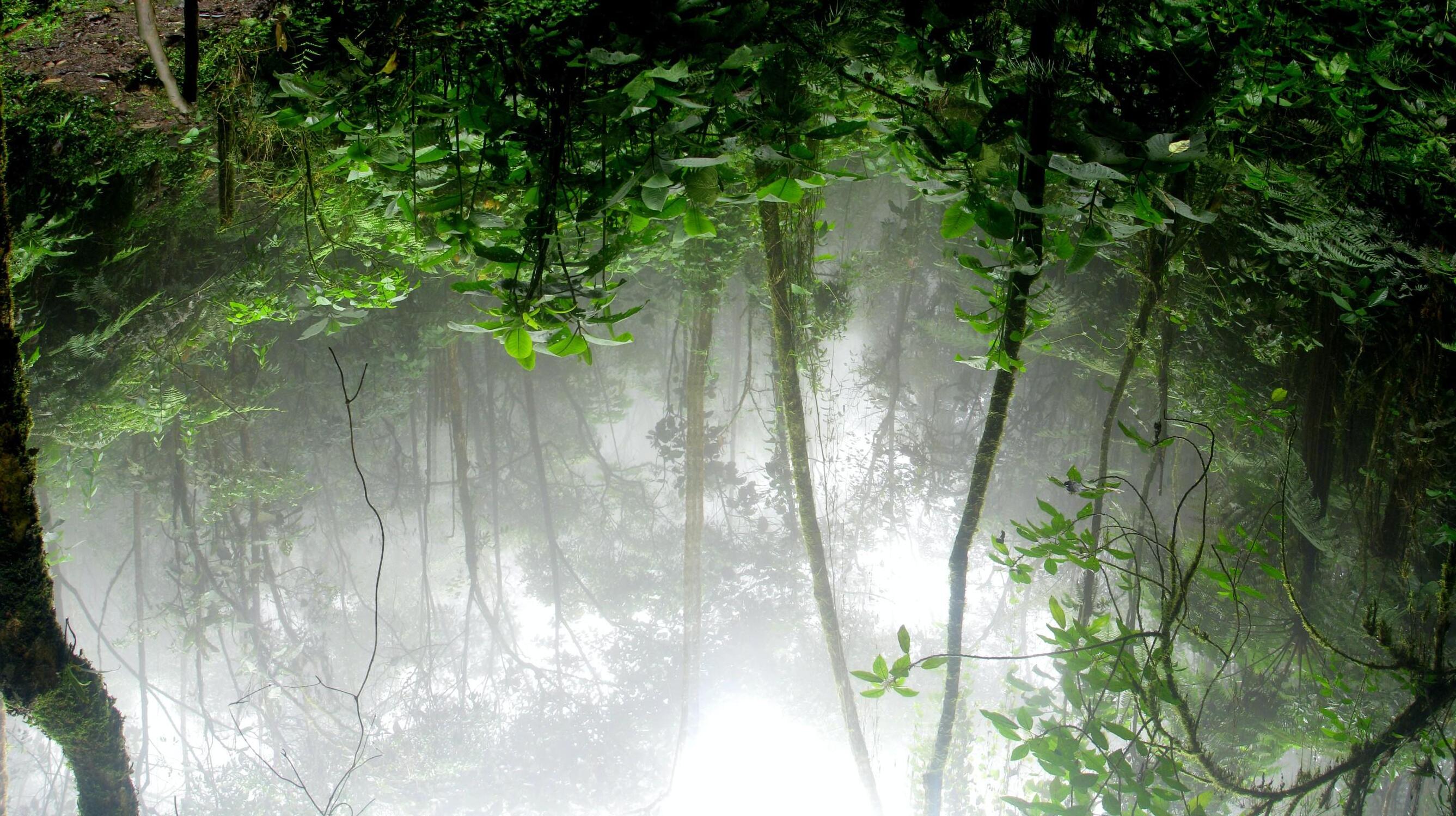
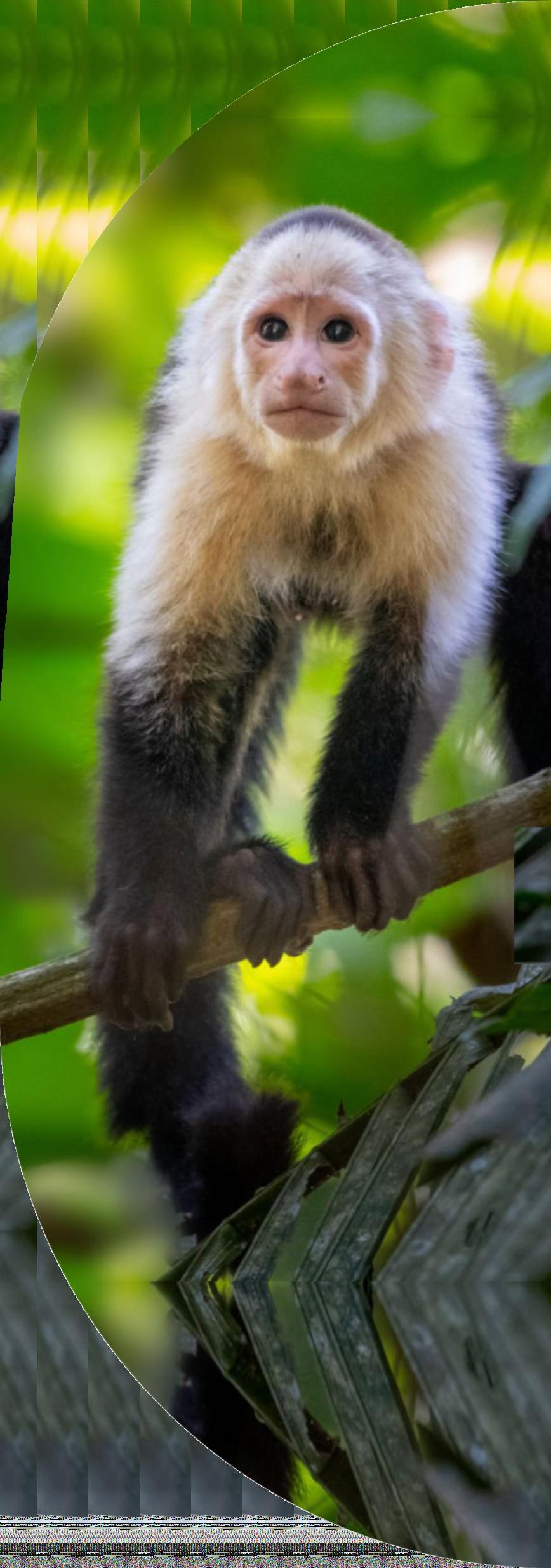
Top Right: Capuchin Monkey. From Bottom Left: Giant Ant Eater, Ocelot and Currasow
Ideal for Research
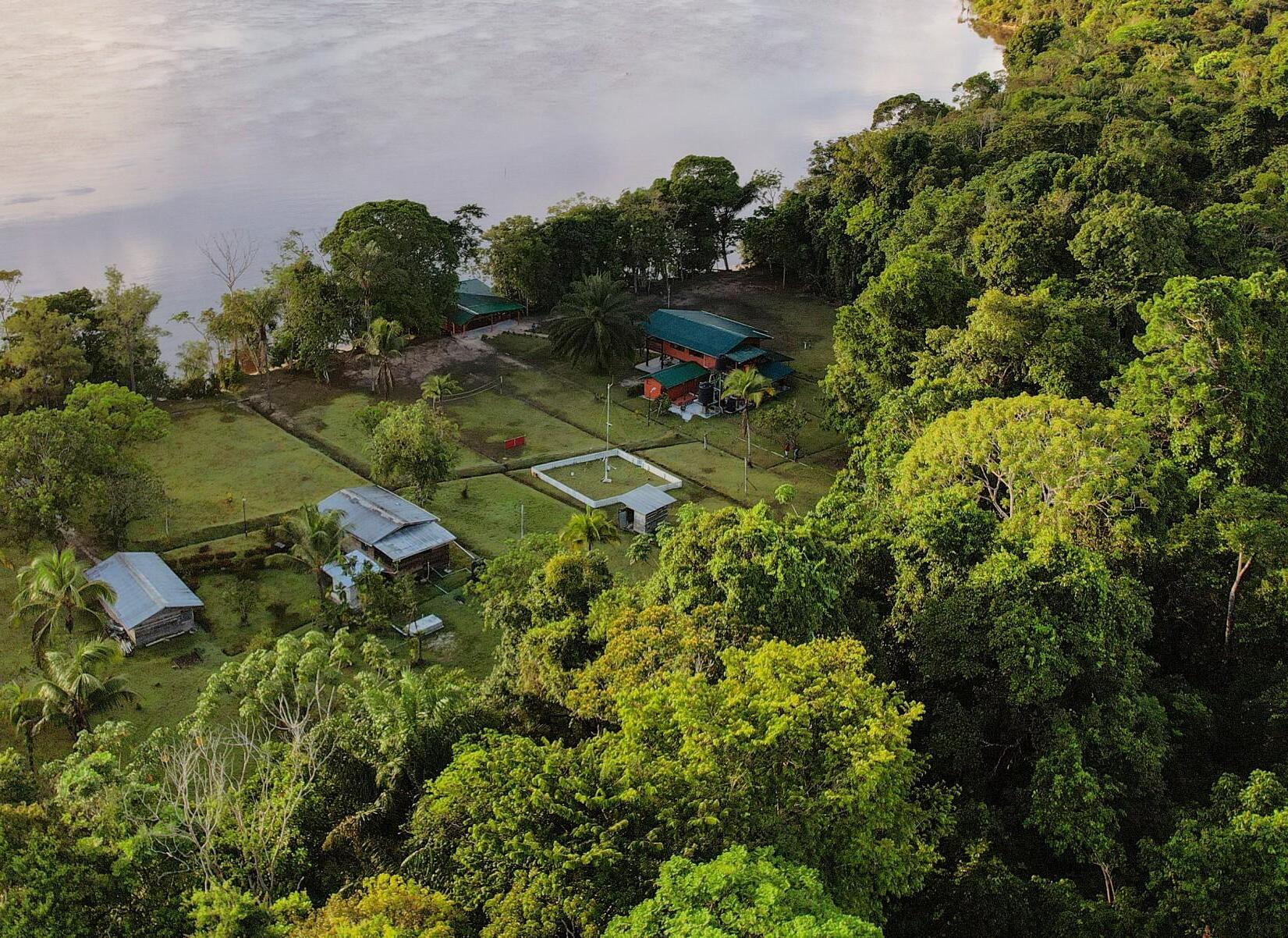
The Saxacalli Rainforest Centre is strategically located in a region of Guyana with rich cultural and historical heritage and understudied ecosystems, which makes it ideal for social, anthropological, and biodiversity research.
The Centre has collaborated with various groups and organizations such as Iwokrama, the Ecotrust Society, and the University of Guyana to facilitate both research and relaxation.
The Centre is close to heritage sites such KykOver-Al, Fort Zeelandia, and the Court of Policy, which presents a wide range of archaeological and anthropological opportunities for research.
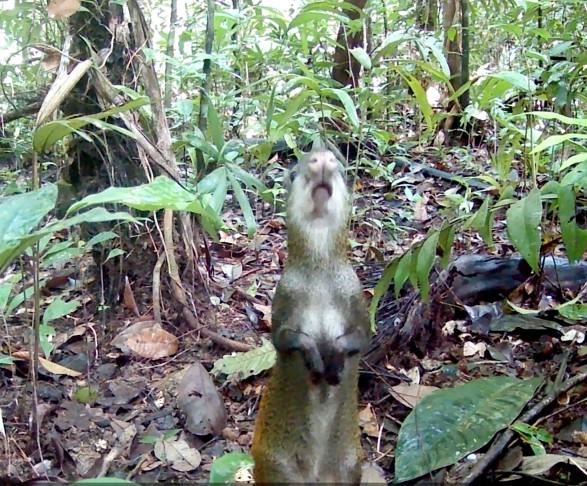
The Centre's proximity to premier tourism sites along the Essequibo River and its surrounding forests offers opportunities to research the nexus between eco-tourism and the environment Access to the Saxacalli Mission can also provide insight into sustainable community practices, resource use, and community dynamics.
Over the years, the wider area has been influenced by extractive industries and this also presents an opportunity to study impacts to the forests, biodiversity, and the watershed.
Top: View of Essequibo River from SRC and a Picture of the Agouti taken by Camera Trap. Bottom: Aerial View of the Saxacalli Rainforest.

Hub of Biodiversity Research

Key Research Projects
Drone Deployment for Data Collection
A unique research has been conducted at the Saxacalli Rainforest Centre to study the use of drone technology for camera trap data collection. Unlike traditional camera trapping methods that require researchers to retrieve data physically, drone technology enables wireless data transfer
This method is efficient and minimizes researchers' impact on the environment, reducing ecosystem disturbance and the overall data collection cost It also creates opportunities to monitor previously inaccessible areas, providing a more comprehensive understanding of the region's ecology Furthermore, the ease of deployment and retrieval of data reduces the risk of harm to the researcher
The study demonstrates the transformative potential of drone technology in environmental research The method's continuous monitoring capability, time and cost efficiency, ease of deployment and data retrieval, and the ability to minimize environmental impact present a compelling alternative to traditional camera trapping methods.
This research contributes significantly to the field of environmental management and conservation, providing a viable approach for future research and monitoring efforts in hard-to-navigate areas. It has the potential to revolutionize environmental monitoring in Guyana and the region.
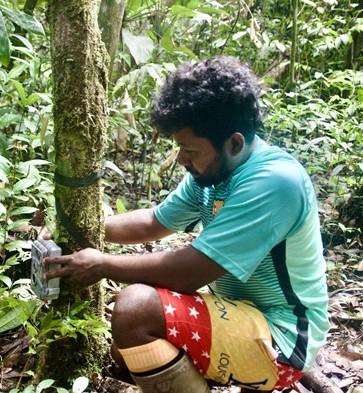
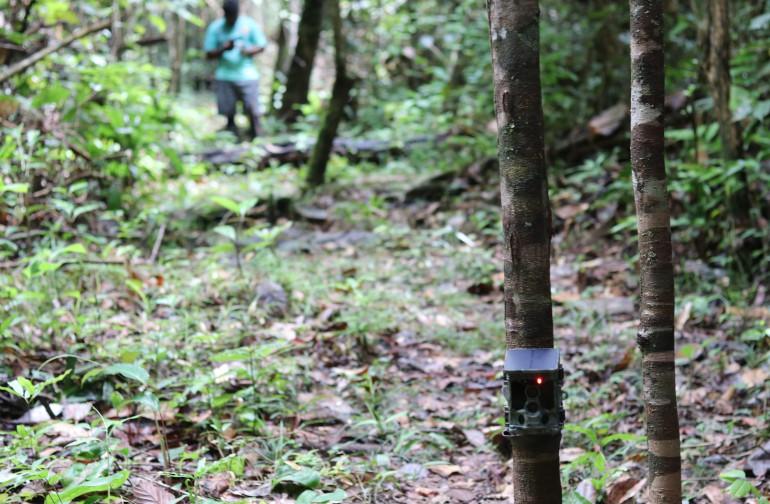

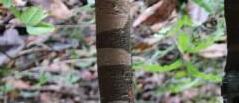
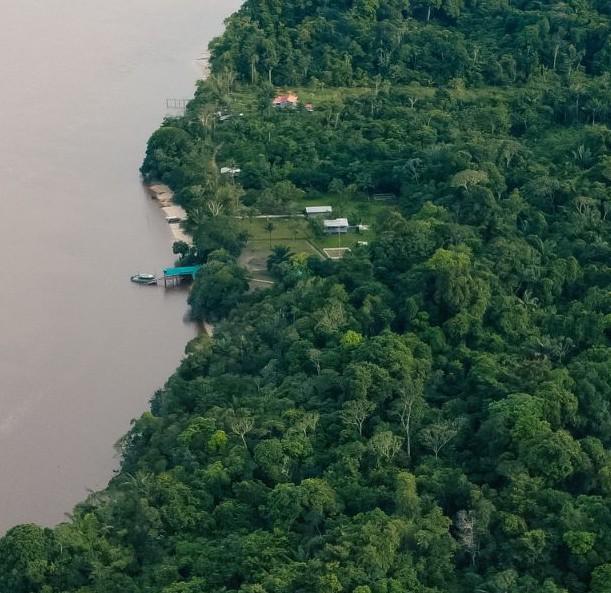
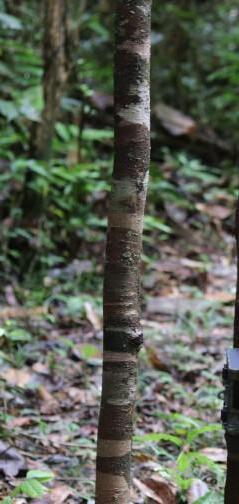
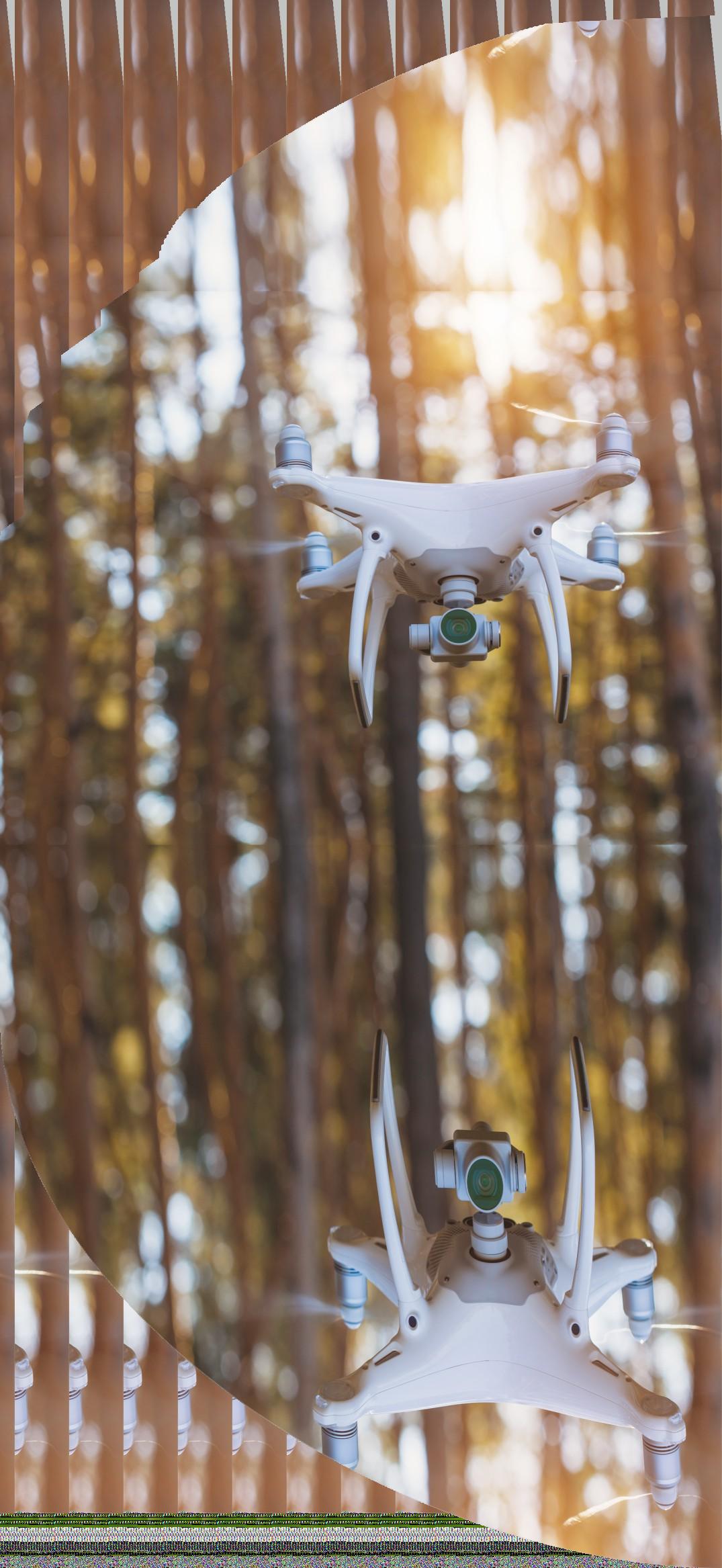
Top Right: Drone in Flight. From Bottom Left: SRC Manager Inspecting Camera Trap, Camera Trap Deployed at SRC, and Drone Shot of SRC.

Collaboration with Iwokrama on Biodiversity Research
The Centre has hosted biodiversity research exercises by EMC Inc, a Guyanese environmental consultancy firm, in collaboration with the Iwokrama International Centre. A joint team participated in camera trapping research and training to monitor mammalian life in the Saxacalli area. The exercise, conducted from September 20 to 22, 2021, is part of a larger initiative from the Bioamazon Project to monitor fauna and flora species as part of the Amazon Cooperation Treaty Organization (ACTO).
Personnel from the Saxacalli Rainforest Centre were trained to set up camera traps and carry out camera trapping. The research focused on the abundance of tapir, and yellowfooted and red-footed tortoises in the area. It also informed a wider Iwokrama and Guyana Wildlife Conservation and Management Commission (GWCMC) project, which monitors the diversity and abundance of wildlife in .Guyana.
Much of the biodiversity in the Saxacalli area remains undiscovered. Over the years, opportunistic visits by researchers and students have helped compile a list of the known species. However, this is scratching the surface of what is yet to be discovered.
The Saxacalli Rainforest Centre is keen to work with students and researchers to learn more about this important ecosystem and its biodiversity and welcomes the opportunity to partner and conduct research.
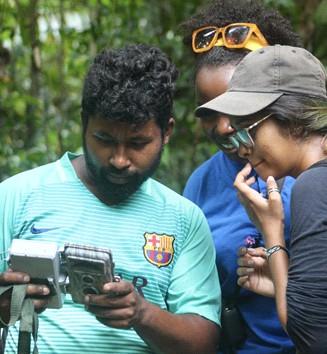
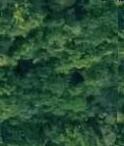
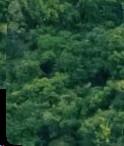

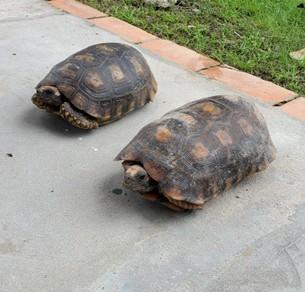
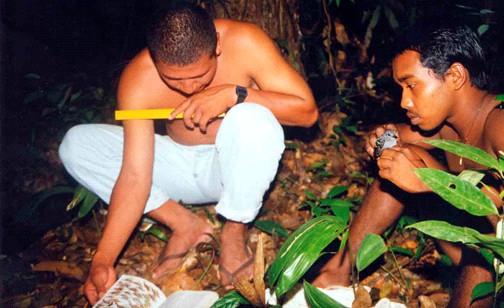

Top Right: Aerial View of SRC. From Bottom Left: Retrieving Data from Camera Trap, Biodiversity Research at SRC, and Yellow Footed Tortoises.
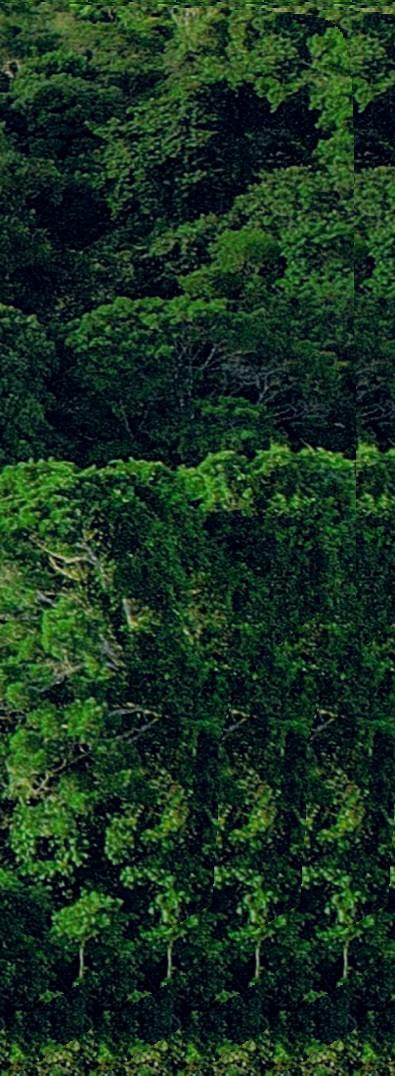

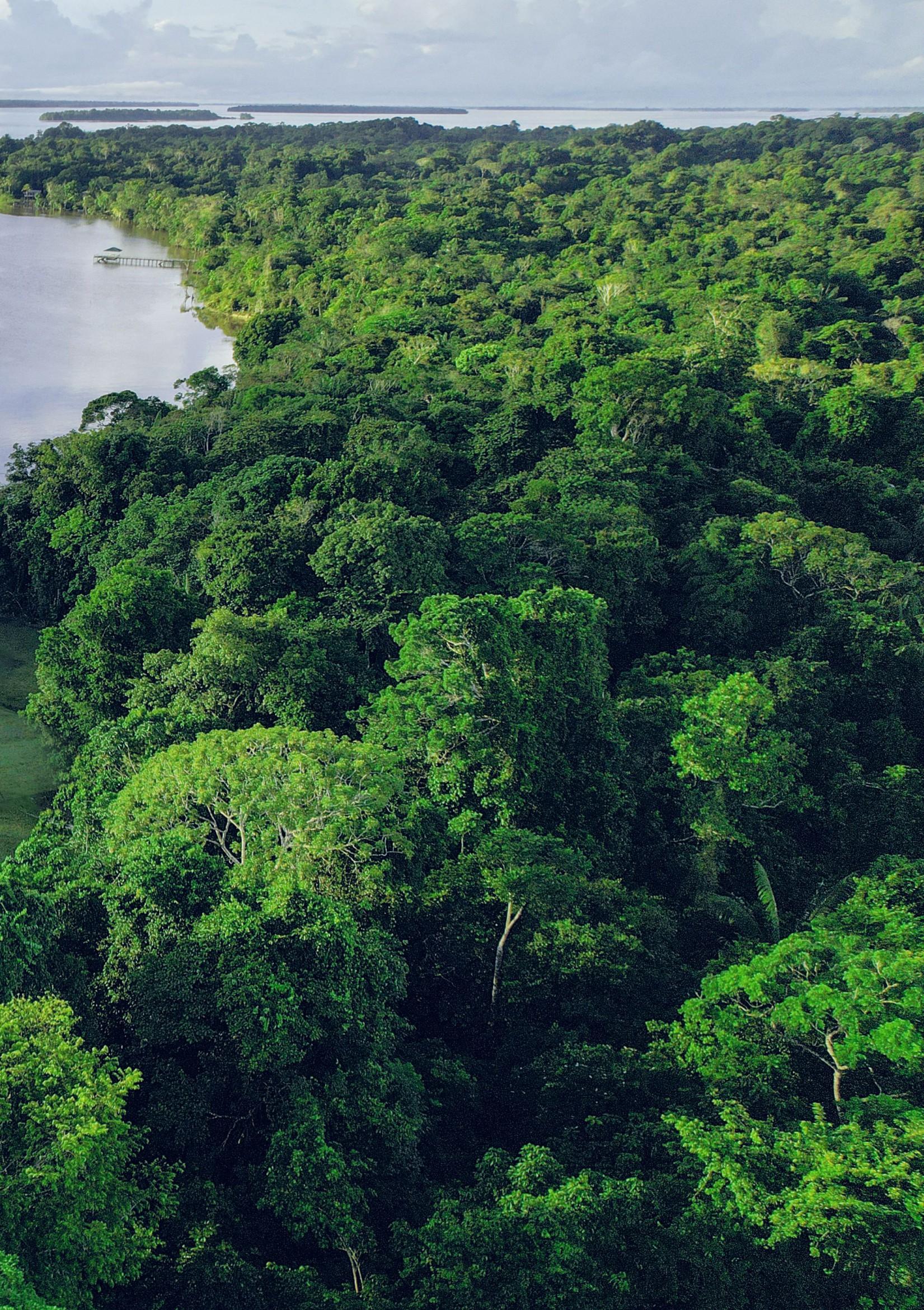
Biodiversity PROFILE
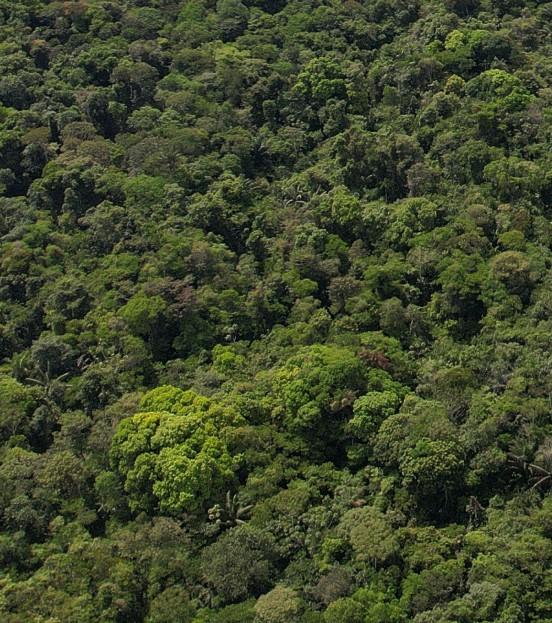
Forest Type: Soil Type: Special Listings:
Mora or swamp forest
Clay, Loam, Brown Sand
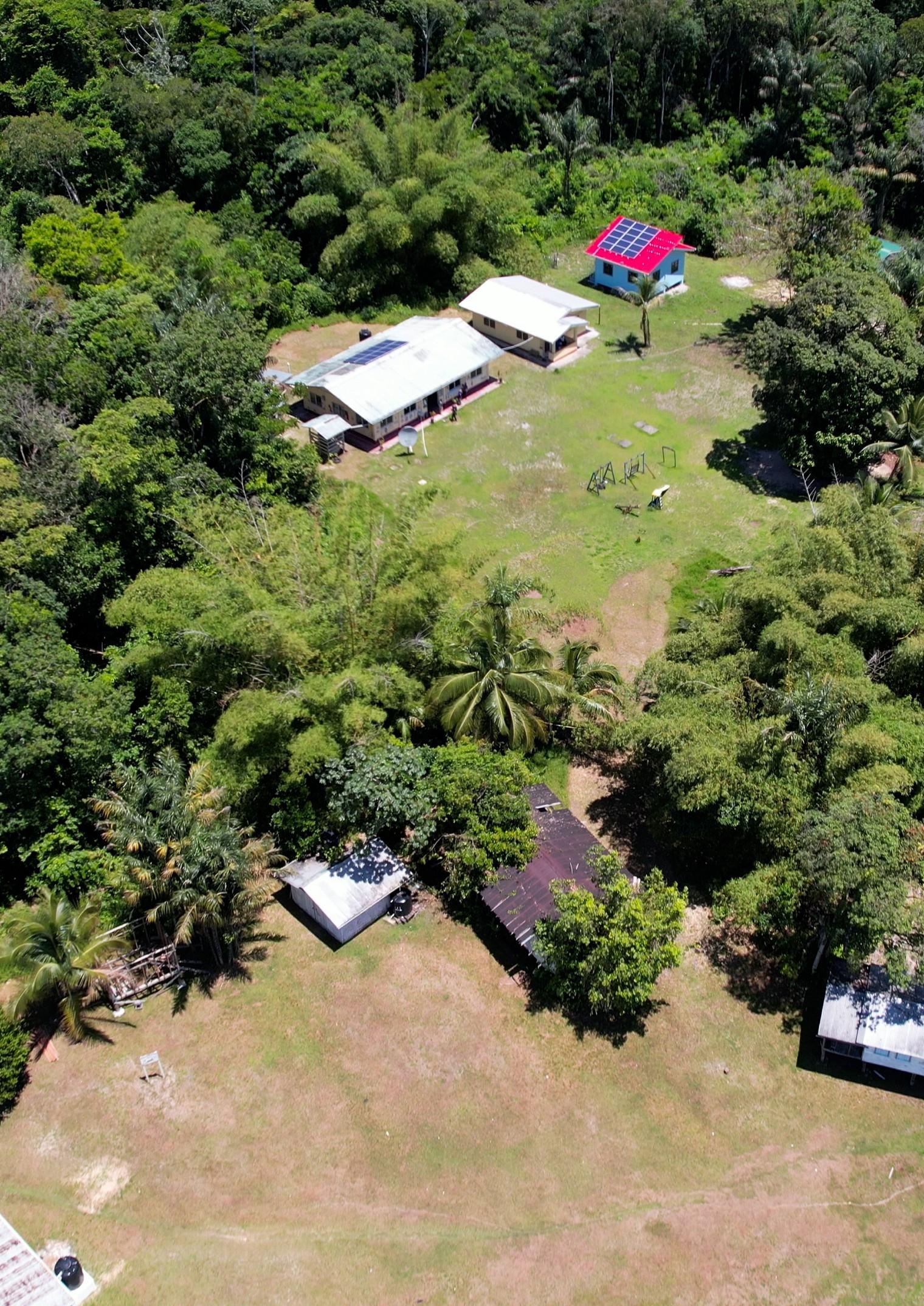
Botany, Mammalogy, Ornithology, Ichthyology, Entomology, Herpetology
Botany Plants
Green heart
Kabukalli
Crabwood
Mora
Ite, couruu, kokerite
Chlorocardium rodiei Lauraceae
Goupia glabra Celastraceae
Carapa guianensis Meliaceae
Mora excelsa Caesalpiniaceae
Palmae Palmaceae
Non-Timber Forest Products
Cufa Clusiaceae
Mukru Myrintaceae
Orchid Orchidaceae
Common Name

Mammalogy (Animals)
Scientific Name Family
Labba Agouti paca Agoutidae
Deer Cervidae
Tapir Tapirus terrestris Tapiridae
Wildhog Peccaries Tayassuidae
Agouti
Dasyprocta leporinus agouti Dasyproctidae
Armadillo Dasypodidae Dasypodidae
Jaguar Panthera Onca Felidae
Ocelot Leopardus Pardalis Felidae
Sloths
Squirrel Monkey
Capuchin Monkey
Choloepus didactylus
Bradypus tridactylus
Bradydipodidae/ Megalonychidae
Saimiri sciureus Cebidae
Cebus apella Cebidae
Howler Monkey Alouatta seniculus Cebidae
Oncilla Leopardus tigrinus Felidae
Forest Rats
Coati
Nasua Procyonidae
Golden Handed Tamarin Saguinus midas Callitrichidae.
Guianan/ white faced
saki
Pithecia Pitheciidae
Brown Bearded Saki Chiropotes satanas Pitheciidae
Vampire Bats Pitheciidae Phyllostomidae
Mollosid / Free tailed bat Molossidae
Ornithology(Birds)
Common Name
King vulture
Black vulture
Scientific Name Family
Sacroramphus papa Cathartidae
Coragyps atratus cathartidae
Turkey vulture Cathartes aura Cathartidae
Lesser yellow head Cathartes burrovianus Cathartidae
Swallow tailed kite
Grey hawk
Yellow headed caracara
Red throated caracara
Gray tinamou
Elanoides forficatus
Accipitridae
Buteo nitidus Accipitridae
Milvago chimachima Falconidae
Daptrius americanus Falconidae
Tinamus tao Tinamidae
Variegated tinamou Crypturellus variegatus Tinamidae
Little chachalaca
Marial guan
Spix's guan
Black curassow
Marbled wood-quail
Grey winged trumpeter
Grey necked woodrail
Sun bittern
Green ibis
Ruddy pigeon
White tipped dove
Ruddy quail dove
Ortalis motmot Cracidae
Penelope marail Cracidae
Penelope jacqucau Cracidae
Crax alector Cracidae
Odontophorous gujanensis Phasianidae
Psophia crepitans Psophiidae
Aramides cajanea Rallidae
Eurypyga helias
Eurypygidae
Mesembrinibis cayennensis Threskiornithidae
Columba subvinacea Columbidae
Leptotila verreauxi Columbidae
Geotrygon montana Columbidae
Ferruginous pygmy owl
Glaucidium brasilianum Strididae
Barn owl Tyto alba Strididae
Long tailed hermit Phaethornis lonngpennis Trochilidae
White chested emerald Anthracothorax nigricollis Trochilidae
Glittering throated hummingbird

Amazilia fimibriata Trochilidae
Gray breasted sabrewing Camplopterus largipennis Trochilidae
Pygmy kingfisher Chloroceryle aenea Alcedinidae
Ringed kingfisher
Blue crowned motmot Motmotus momota Motmotidae
Yellow-billed jacamar Galbula albirostris Galbulidae
Green tailed jacamar Galbula Galbulidae
Cream coloured woodpecker
Ringed woodpecker
Crimson-crested woodpecker
Red-necked woodpecker
Plain brown woodcreeper
Wedge billed woodcreeper
Buff throated woodcreeper
Celeus flavus Picidae
Celeus torquatus Picidae
Campephilus melanopeucos Picidae
Campephilus rubricolllis Picidae
Dendrocincla fuliginosa Dendrocolapidae
Glyphorynchus spirurus Dendrocolapidae
Xiphorhynchus guttatus Dendrocolapidae
Curved billed scythebill Campylorhamphus procurvoides Dendrocolapidae
Blue and yellow macaw Ara ararauna Pscittacidae
Red and green macaw Ara chloroptera Pscittacidae
Red bellied macaw Ara manilata Pscittacidae
Red-shouldered macaw Ara nobilis Pscittacidae
Blue headed parrot
Dusky parrot
Red fan parrot
Orange winged parrot
Mealy parrot
Brown throated parakeet
Parrotlet
Caica parrot
Black headed parrot
Channel-billed toucan
Red-billed toucan
Pionus mentruus Pscittacidae
Pionus fuscus Pscittacidae
Deroptyus acciptrinus Pscittacidae
Amazona amazonica Pscittacidae
Amazona farinosa Pscittacidae
Aratinga pertinax Pscittacidae
Forpus sclateri Pscittacidae
Pionopsitta caica Pscittacidae
Pionites melanocepahlus Pscittacidae
Rhamphastos vitellinus Ramphastidae
Rhamphastos tucanus Ramphastidae
Black necked aracaris Pteroglossus aracari Ramphastidae
Foliage gleaner
Automolus sp. Furnaridae
Black crested antshrike Sakephorus canadensis Thamnophillidae
Barred antshrike Thamnophilus doliatus Thamnophillidae
White flanked antwren Myrmotherula axillaris Thamnophillidae
Mouse coloured antshrike Thamnophilus murinus Thamnophillidae
Common Name
Rufous throated antbird

Scientific Name Family
Gymnopithys rufigula Formicariidae
White-plumed antbird pithys albifrons Formicariidae
Great kiskadee
Pithangus sulphuratus Tyrannidae
Lesser kiskadee Pithangus lictor Tyrannidae
Rusty margined
flycatcher
Tropical king bird
White ringed flycatcher
Myiozetetes cayanensis Tyrannidae
Tyrranus melancholicus Tyrannidae
Conopius parva Tyrannidae
Yellow bellied elania Elania flavogaster Tyrannidae
White crowned manakin
Golden crowned manakin
White fronted manakin
Crimson hooded manakin
Screaming piha
Dixiphia pipra Pipridae
Pipra erythrocephala Pipridae
Pipra serena Pipridae
Pipra aueola Pipridae
Lipaugus vociferans Cotingidae
White naped xenopsaris Xenopsaris albinucha Cotingidae
Southern house wren Troglodytidae
White necked thrush
Turdus albicollis Turdidae
Torquoise tanagers Tangara mexicana Thraupidae
Burnish buff tanager
Tangara cayana Thraupidae
Silver beaked tanager Ramphocelus carbo Thraupidae
Blue grey tanager Thraupis episcopus Thraupidae
Palm tanager
Thraupis palmarum Thraupidae
Violaceous euphonia Ephonia violacea Thraupidae
Purple honeycreeper Cyanerpes caeruleus Thraupidae
Banna dacnis Coereba flaveola Thraupidae
Green oropendola
Yellow rumped cacique
Psacocolius viridis Icteridae
Cacicus cela Icteridae
Moriche oriole Icterus chrysocephalus Icteridae
Lesser seed finch Oryzoborous angolensis Emberizidae
Ichthyology(Fish)
Common Name
Catarback
Scientific Name
Family
Myleus rhombadalli Characidae
Pacu Colossoma sp Characidae
Baira fry
Haimara
Hydrolysus arnatus Characidae
Hoplias aimara / macroputhalmus Erythrinidae
Basha Plagioscion sqamasissimus Sciaenidae
Cumma Doras sp
Dogfish
Biara
Hassar
Tiger fish
Lung fish
Acestrorhynchus
Hydrolycus scomberodes
Hoplosternum littorale Doradidae
Hydrocynus vittatus Alestidae
Dipnoi
Herpetology(Frogs,Lizards, Snakes, and Turtles)
Researchers:Tokoye Biology and Conservation Club Date: June 27 to July 1, 2003
Common Names Scientific Names Family
White Lipped Frog
Leptodactylus sp Leptodactylidae
Tree frog Hylidae
Cane Toad Bufo marinus Bufonidae
Frog Scinax ruba Hylidae
Lizard Kentropy sp
Amazon Racerunner
Lizard Ameiva Teidae
Turnip tailed Gecko
Parrot snake

Theiadactylus rapicauda Gekkonidae
Bothriopsis bileniata Vipiridae
Camacushi Chronius sp Colubridae
Bush master Lachesis muta Vipiridae
Labaria
Bothrops atrox Vipiridae
Hymerali (Coral snake) Micrurus surinamensis Elapidae
Yellow- footed turtle
Leaf Litter toad
Glass Frogs
Ceochelome carbonaria Testeidinidae
Bufo typhonius Bufonidae
Centrolenidae
Poison Dart frogs Dendrobatidae Dendrobatidae
Rainbow Boa
Epicrates cenchria Boidae
Emerald Boa Corallus caninus Boidae
Entomology(Insects)
Common Name Order
Moths and butterflies
Lepidoptera
Beetles Coleoptera
Wasps Hymenoptera
Roaches Dictyoptera
Grasshoppers Orthoptera
Dragonflies
Odonata
Plantbugs Hemiptera
